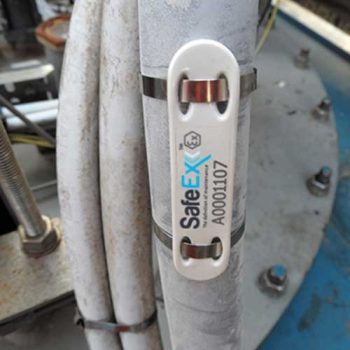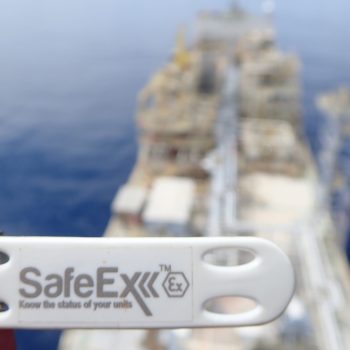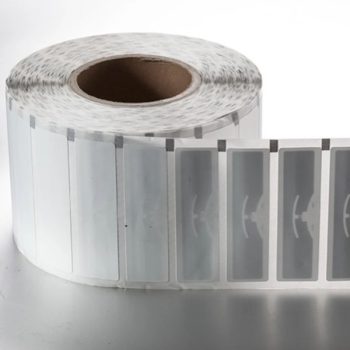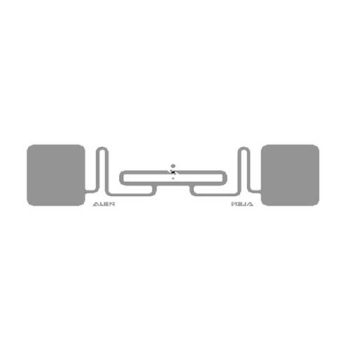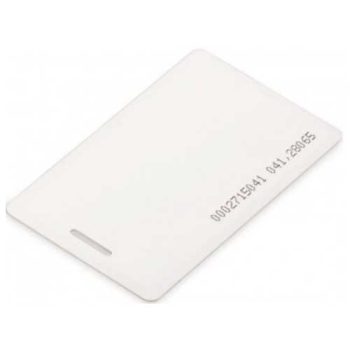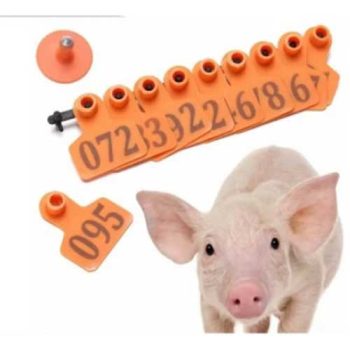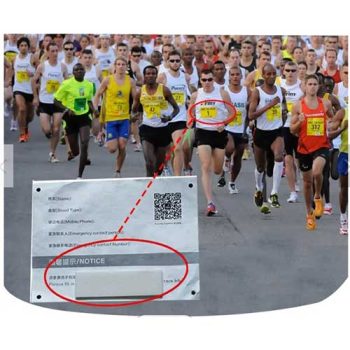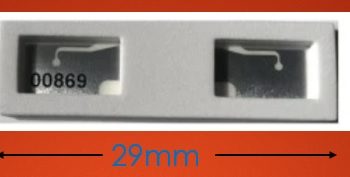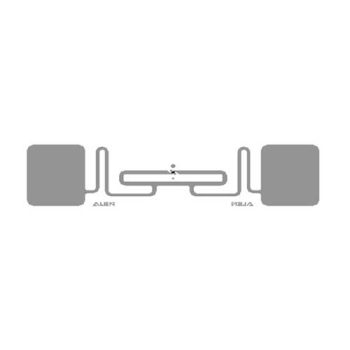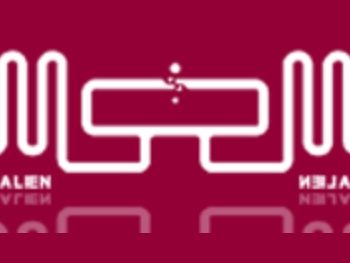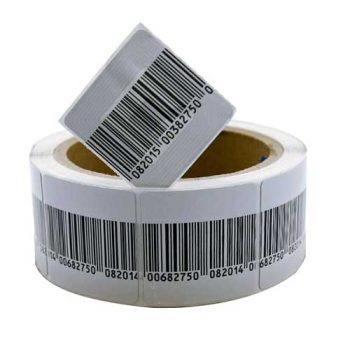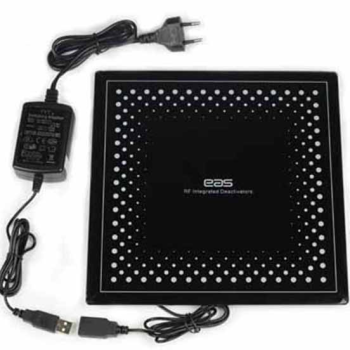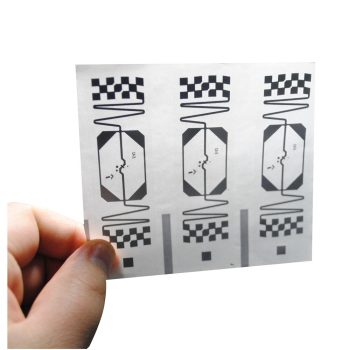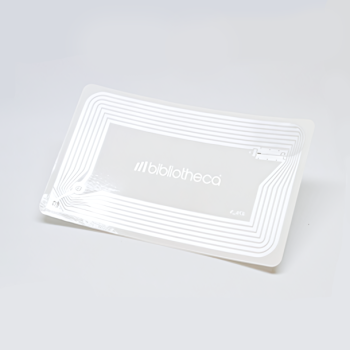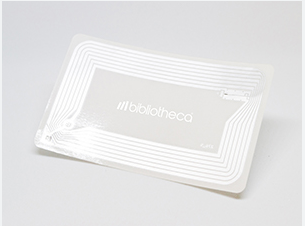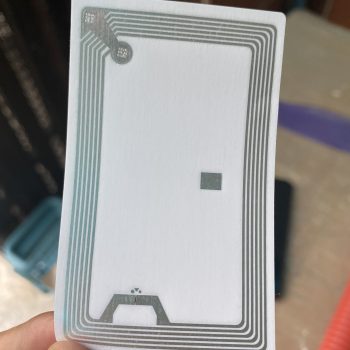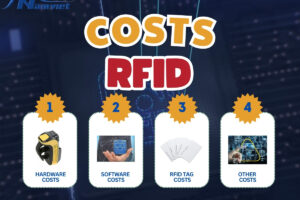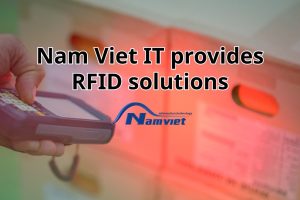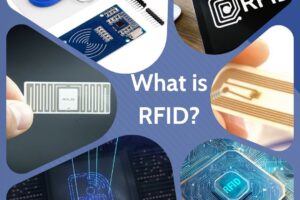Both RFID and QR codes utilize contactless methods for data transmission and collection, enhancing interaction and elevating the customer experience. However, these two technologies differ in their reading methods, reading ranges, and reading speeds. In this article, IT Nam Viet will provide a detailed comparison of the similarities and differences between RFID and QR code technologies. Don’t miss out!
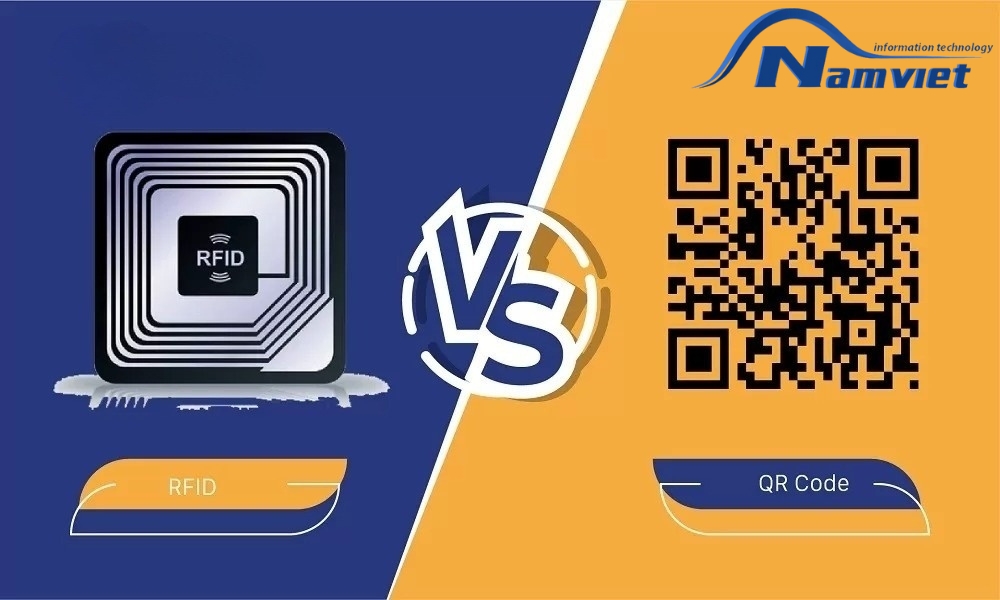
What is RFID? An Overview of RFID Technology
RFID stands for Radio Frequency Identification. It’s a technology that uses electromagnetic fields to automatically identify and track tags attached to objects. An RFID system comprises:
- RFID tags
- RFID reader
- Antenna
- Software
An RFID system uses RFID tags attached to the objects that need to be identified. A two-way radio transceiver, called an interrogator (in this case, the RFID reader), sends a signal to the RFID tag and reads the data returned from it.
You can learn more about RFID technology in this article: “What is RFID? System Structure and Operating Principle Of RFID“
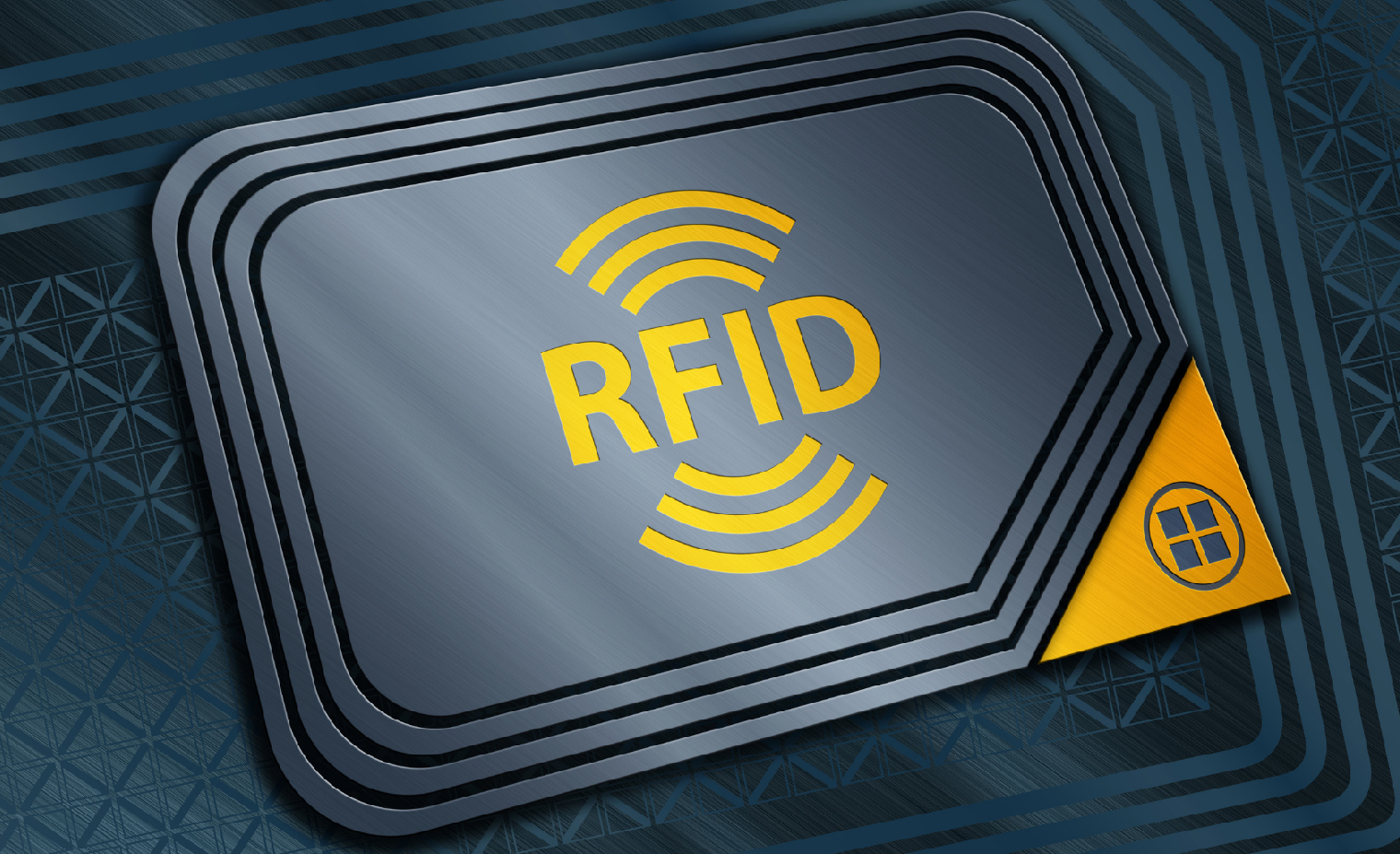
RFID is utilized in a wide range of everyday applications, with some prominent examples including: RFID in library management, RFID in logistics, RFID in asset management, RFID in warehouse management, RFID in animal tracking, RFID for bus systems, and RFID in healthcare. For a deeper dive into RFID applications, you can check out this detailed article: “RFID Technology and Its Applications in Daily Life“.
Also, explore IT Nam Viet’s extensive collection of RFID tags:
What is a QR Code? An Overview of QR Code Technology
QR Code, short for Quick Response Code, is also known as a matrix barcode or a 2D barcode. It is a type of encoded information displayed in a way that machines can read. QR Codes first appeared in 1994, created by Denso Wave (a subsidiary of Toyota). A QR code can hold up to 7,089 numeric characters or 4,296 alphanumeric characters, including punctuation marks and special characters.
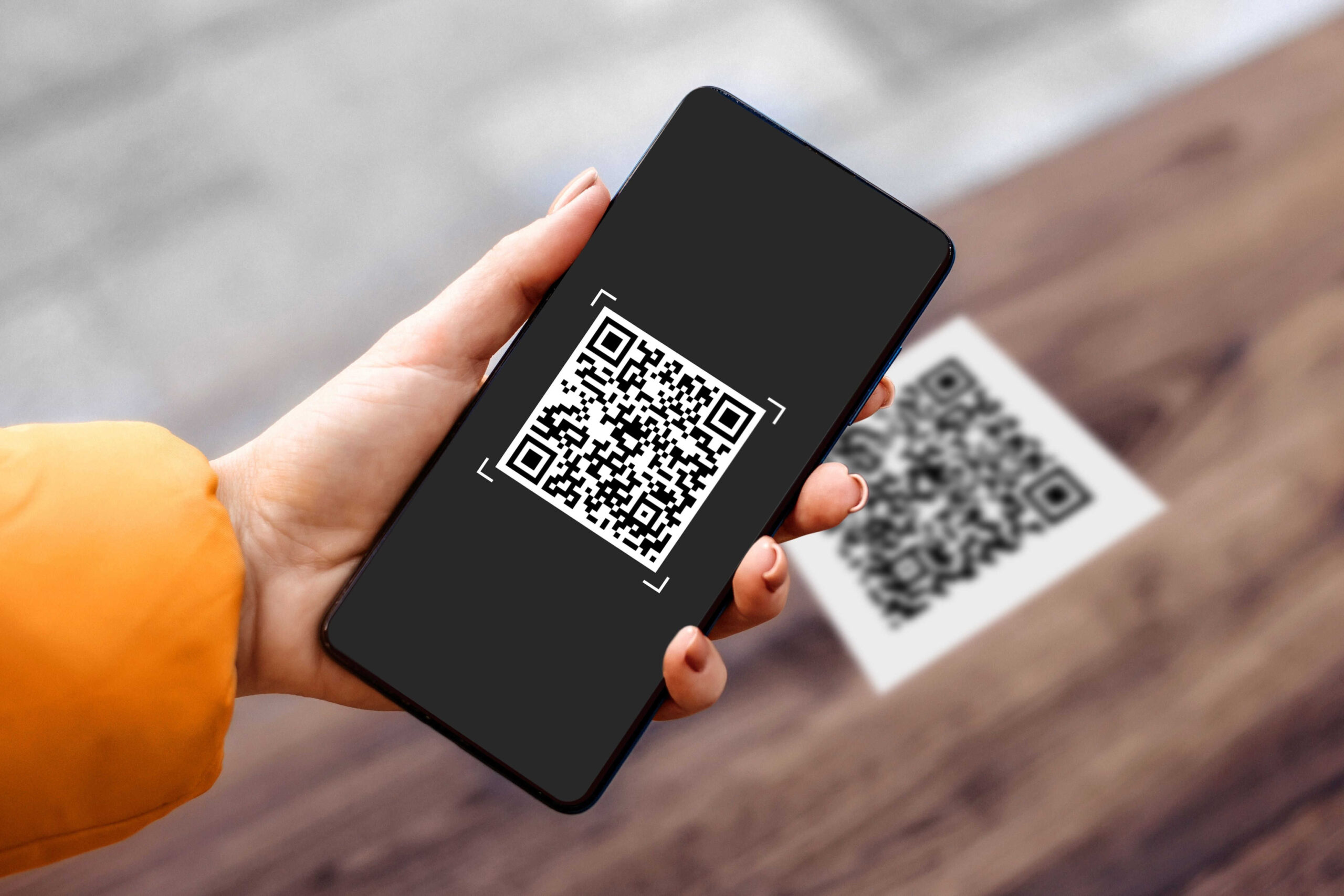
QR Codes allow for quick scanning and decoding with devices like barcode scanners or camera-equipped phones with QR code scanning apps, offering great convenience to users. QR Code technology can encode a variety of information, including text, URLs, Wi-Fi network details, and more. It can even encode entire sentences and phrases.
QR code solutions are widely used in various aspects of life, with notable examples including advertising, marketing, product packaging, event ticketing, restaurant menus, and more. QR codes enable users to access content quickly, enhancing their experience and increasing engagement.
Similarities Between RFID and QR Code Technologies
Both RFID and QR codes can store and transmit information digitally, allowing for larger data capacity compared to traditional technologies. Moreover, both technologies utilize contactless methods for data transmission and collection:
- QR codes: Users simply scan the code with a camera.
- RFID: Radio waves are used to capture data.
Furthermore, another significant similarity between these two technologies is their machine-readability, enabling automation of data scanning and processing, which optimizes time and cost efficiency. In addition, implementing RFID and QR codes offers the advantage of increased interaction and enhanced customer experience, while minimizing errors in management and operational processes.
For example, you can scan a QR code to access detailed product information, while RFID can be used for contactless payments, providing a convenient shopping experience.
In conclusion, both RFID and QR code technologies offer practical benefits to businesses in information management and process automation, effectively contributing to improved and enhanced customer experiences.
Differentiating Between RFID and QR Codes
Despite sharing some similarities, these two technologies have distinct differences, as highlighted in the following comparison table:
| Feature | RFID | QR Code |
| Reading Method | Uses electromagnetic fields to automatically identify and track tags attached to objects | Uses optical scanners, often integrated into cameras |
| Line of Sight | DOES NOT require a direct line of sight | REQUIRES a direct line of sight (though easier to aim than traditional barcodes) |
| Reading Device | Requires specialized RFID readers | Can be read with smartphones equipped with camera-based QR code scanners or dedicated QR code readers |
| Reading Range | Can read from a distance (0.5 – 30m), enabling contactless and automated data collection | Can only be read at close range (under 1m) |
| Reading Conditions | Can read all tags within the radio wave range, even if obstructed | Can only read codes within the direct line of sight of the device |
| Reading Speed | Can read multiple tags simultaneously at high speed; however, signal transmission through metal or liquid environments can be significantly reduced | Can only read one code at a time |
| Security and Privacy | Higher security due to data encryption and protection through access control methods; reader collision can occur when two signals overlap in close proximity; if one device in the system fails, RFID may not function | Can be easily duplicated or tampered with; however, encryption and secure QR code generation methods can enhance security |
| Investment Cost | Higher cost due to the need for specialized equipment to operate the RFID system | Lower investment cost (code readers and QR code printers) |
| Warehouse Inbound/Outbound Process | Reader reads all tags attached to products, even if they are not visible. Data is transferred directly to the server to compare and verify inbound/outbound quantities and generate new receipts. | Uses devices integrated with warehouse management software to scan codes on cartons/pallets. Information is connected to the software system to automatically generate goods issue/receipt slips. |
| Inventory Management | Fast, time-saving, and labor-saving due to accurate reading capabilities for large quantities | Inventory takes more time compared to using RFID technology for warehouse management. |
FAQs – Frequently Asked Questions about RFID and QR Codes
We regularly receive inquiries about RFID solutions and related technologies, including QR codes, across IT Nam Viet’s online platforms. In the following section, we address some common customer questions about RFID and QR codes:
Can RFID readers scan QR codes?
The answer is NO. RFID readers use radio waves to communicate with RFID tags equipped with chips and antennas. In contrast, QR codes are essentially 2D barcodes that can be scanned and decoded using smartphone cameras or dedicated QR code scanners.
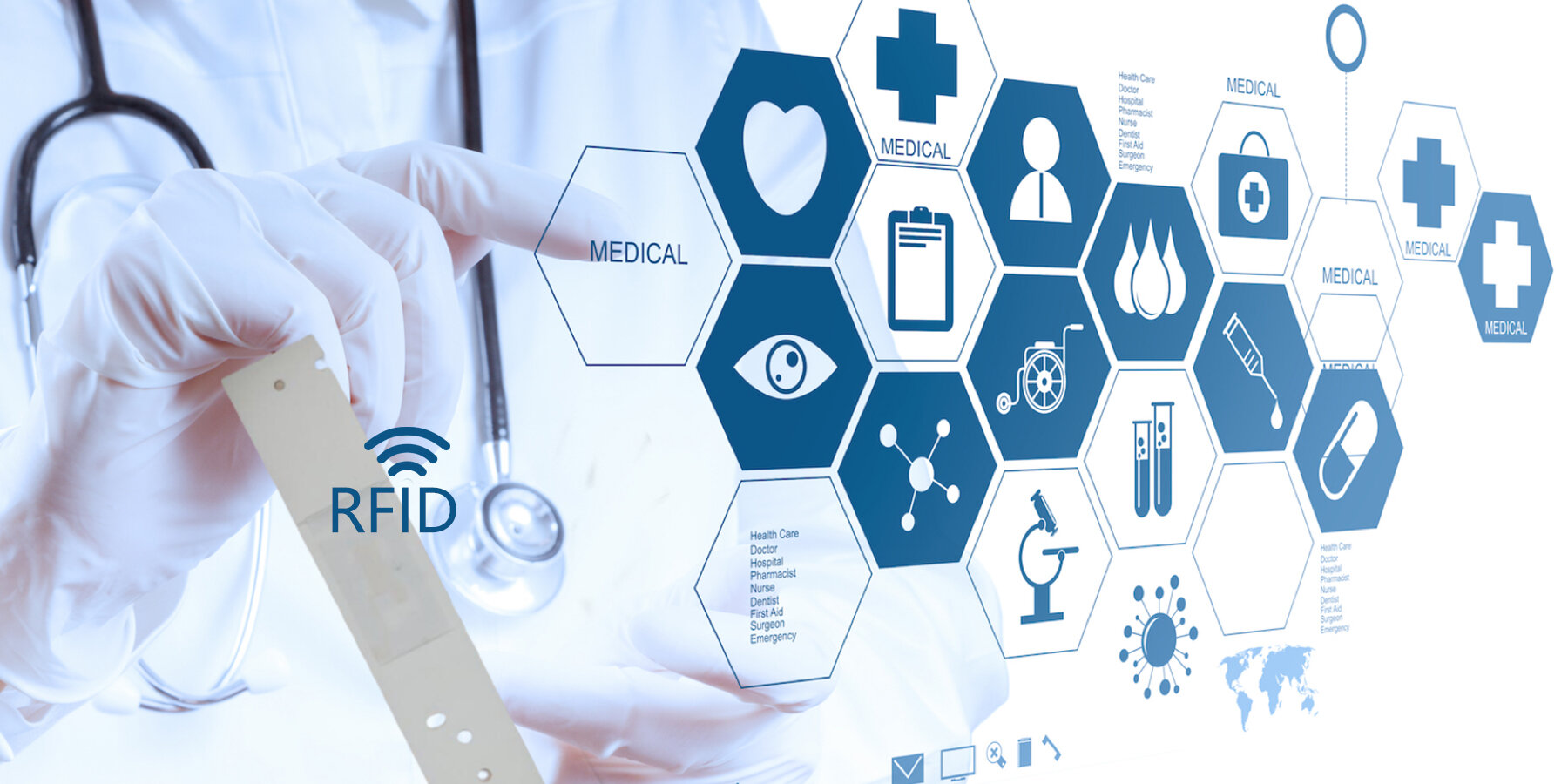
RFID or QR Codes: Which is Right for You?
Ultimately, the choice between RFID and QR codes depends on your specific needs and budget.
RFID excels in:
- Automating data collection and enabling hands-free, automatic reading, reducing manual intervention.
- Reading data from a distance.
QR codes are advantageous for their:
- Simplicity and lower implementation cost.
- Suitability for user interaction via smartphones.
Therefore, consider your priorities and requirements to determine which technology best aligns with your objectives and resources.
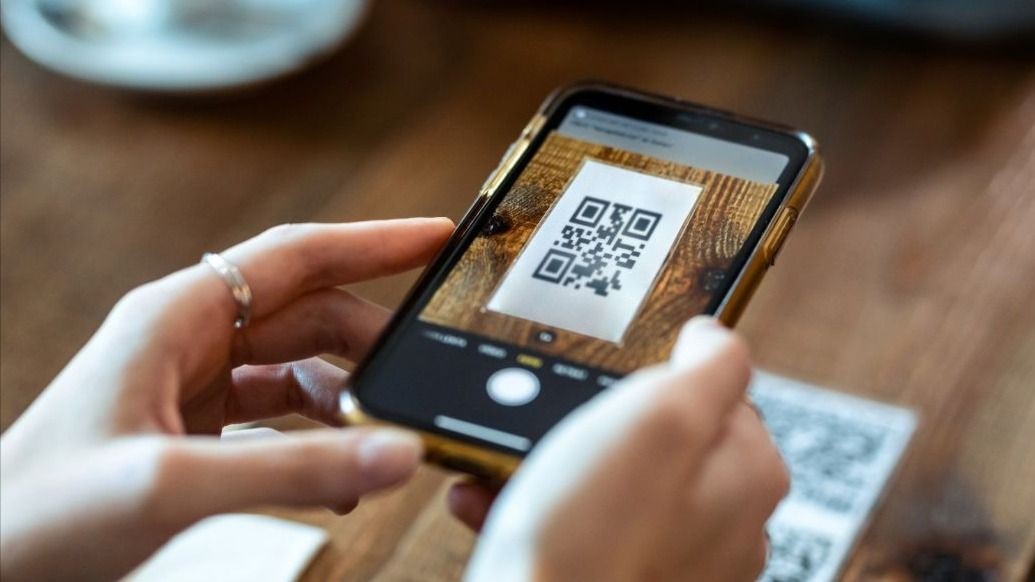
Is RFID or QR Code Technology Better?
As mentioned, both RFID and QR code technologies offer unique features and capabilities for encoding, transmitting, and retrieving data. Consequently, determining which technology is “better” depends entirely on the specific use case and requirements.
RFID advantages:
- Contactless reading capability
- Longer reading range
- Larger data capacity
QR code advantages:
- Ease of use and implementation
- Versatility and wide range of applications
- Suitable for close-range scanning
Ultimately, users should carefully consider their needs and choose the technology that best aligns with their specific requirements, optimizes their budget, and delivers the desired outcomes.
IT Nam Viet – Your Trusted Partner for Comprehensive RFID Solutions at the Best Market Prices
IT Nam Viet is proud to be a pioneer in the RFID field in Vietnam. With over 10 years of experience and a team of dedicated professionals, we are committed to providing our clients with the most effective solutions at the most competitive prices in the market.
Here’s what sets IT Nam Viet apart:
- Comprehensive RFID solutions: We offer a complete range of RFID products, including tags, readers, antennas, printers, and more, to meet even the most demanding requirements.
- Unwavering commitment to quality: We guarantee top-notch service and genuine products, ensuring efficient and long-lasting performance.
- Best market prices: Our cost-effective RFID solutions help clients optimize their investment and maximize their return.
- Expert consultation: Our highly trained and experienced team provides expert guidance to help you choose the perfect RFID solution tailored to your specific needs and budget.
- Rapid technical support: We offer prompt and reliable technical assistance to ensure your RFID system operates smoothly and efficiently.
IT Nam Viet is a trusted partner for many businesses implementing RFID solutions. We help enhance management efficiency, optimize operational processes, and strengthen competitive advantages. We hope that this information about RFID and QR codes empowers businesses to make informed decisions about the best technology for their needs.
For expert advice on RFID solutions, please contact us via our hotline: (+84) 962.888.179.
My name is Le Nam Viet, currently FOUNDER & CEO of Nam Viet IT Company, I graduated from Ho Chi Minh Polytechnic University. I have more than 3 years of experience providing RFID chip technology solutions, RFID scanners, barcode labels and barcode readers. It’s a pleasure to share my knowledge with readers.



 Tiếng Việt
Tiếng Việt